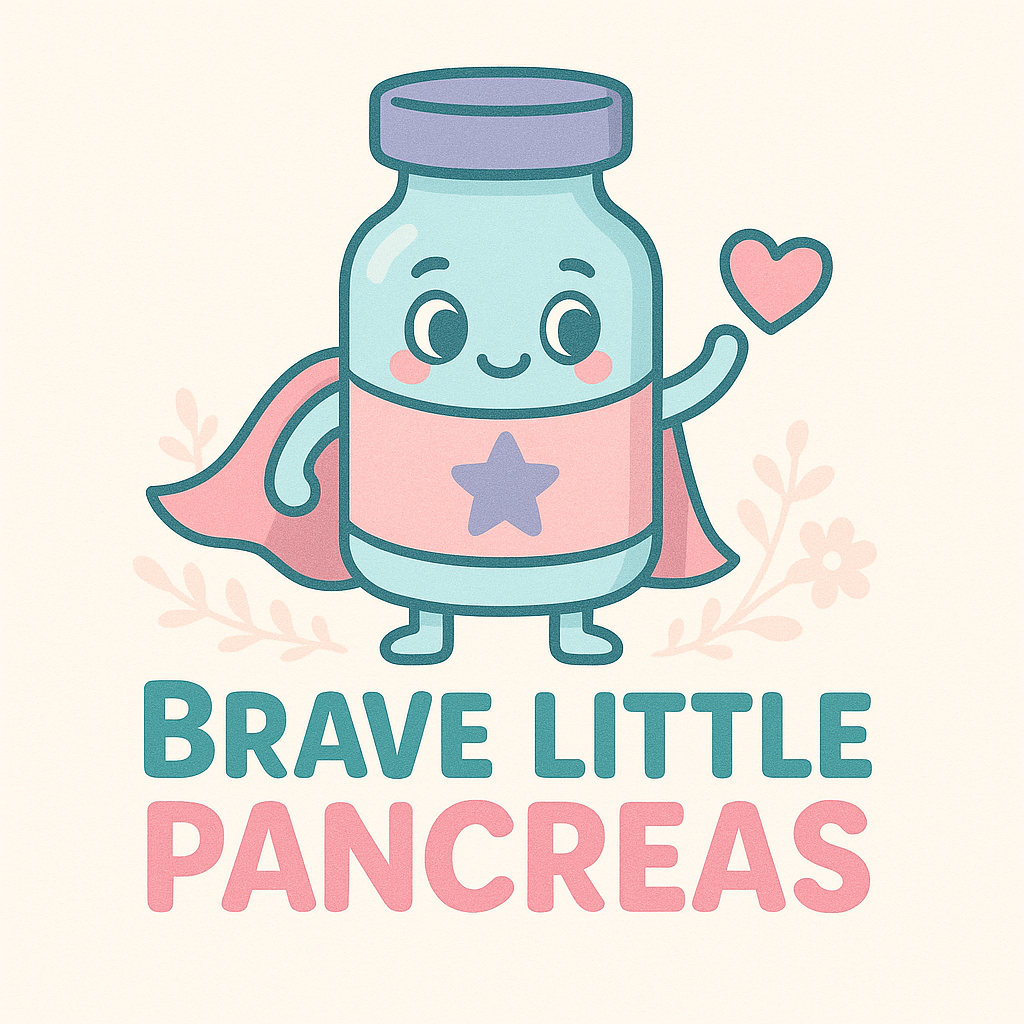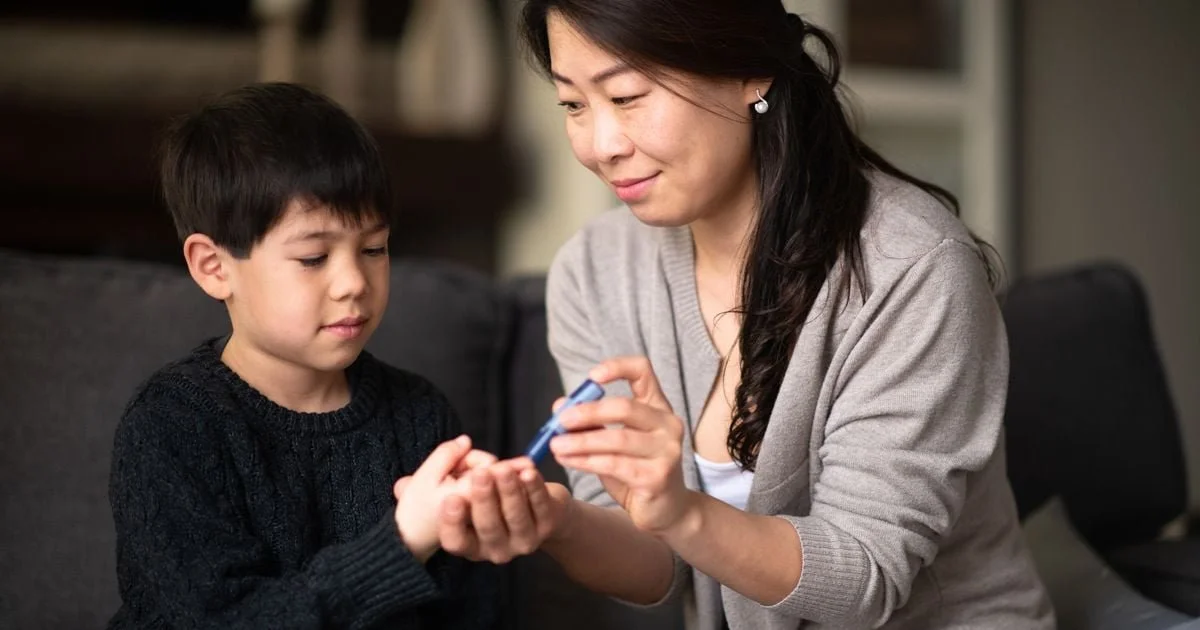In this lesson, you’ll learn:
✔️ How to talk about diabetes in a way your child can understand
✔️ Tips for supporting different age groups (toddlers, school-age, teens)
✔️ How to balance honesty with reassurance
✔️ Words and phrases that build confidence instead of fear
Why These Conversations Matter
Children often take their cues from the adults around them. How you explain Type 1 Diabetes shapes the way they see it — not as something “bad,” but as something they can live with while still being healthy, active, and happy.
Honest, age-appropriate conversations reduce anxiety and give your child a sense of control.
Age-Appropriate Tips
🌱 Toddlers & Preschoolers
Keep it simple: “Your body needs insulin to use the food you eat for energy.”
Use positive language: avoid calling diabetes “bad” or “broken.”
Explain routines as part of daily life: “First we check, then we play.”
🎒 School-Age Kids
Give them small responsibilities: carrying their snack, checking their CGM with you.
Use analogies they can relate to: “Insulin is like the key that unlocks the door so sugar can go into your cells for energy.”
Reassure them: diabetes is not their fault, and it’s not something they can “catch.”
🌟 Teens
Encourage independence: involve them in carb counting, dose decisions, or supply prep.
Acknowledge feelings: let them express frustration or burnout.
Be collaborative: “Let’s figure this out together” instead of “You need to…”
Remind them: managing diabetes doesn’t define who they are — it’s just one part of their story.
Phrases That Build Confidence
Try using words that encourage, rather than frighten:
Instead of: “Be careful, or you’ll get sick.”
Say: “Checking often keeps you safe and strong.”Instead of: “You have to do this.”
Say: “This helps your body get the energy it needs.”Instead of: “It’s your problem to manage.”
Say: “We’re a team, and I’ll always be here to help.”
Making Space for Feelings
Let your child know it’s okay to be sad, mad, or frustrated.
Validate: “I know it feels unfair sometimes.”
Offer reassurance: “We’ll handle this together.”
Encourage questions, even the hard ones. If you don’t know the answer, write it down to ask your care team.
Kid-Friendly Diabetes Phrases
Simple ways to talk about T1D with your child — by age group.
🌱 Toddlers & Preschoolers
“Your body needs insulin to use food for energy.”
“We check your blood sugar to help your body feel good.”
“First we check, then we play.”
“Insulin is your helper.”
🎒 School-Age Kids
“Insulin is like a key that unlocks the door so sugar can go into your cells for energy.”
“Checking your blood sugar tells us how much fuel is in your tank.”
“Snacks and insulin are like tools that keep you strong.”
“Diabetes isn’t your fault. It’s not something you did, and it’s not something you can give to someone else.”
🌟 Teens
“You’re not alone in this — we’re a team.”
“Checking often gives you control, not less freedom.”
“This is one part of your life, but it doesn’t define you.”
“It’s okay to be frustrated. Managing diabetes is tough — and you’re tougher.”
“I trust you to learn this step by step. You don’t have to get it perfect right away.”
Encourage Open Discussion
Children who’ve been diagnosed with diabetes will likely initially feel scared, upset, and angered. It’s important to let them know they’ve done nothing wrong to cause this, and neither have you! It’s also time to assure them they’re not alone (in 2021, over 1 .2 million children and adolescents have type 1 diabetes1).
Be Honest: There's a delicate balance between overwhelming your child with knowledge and hiding things from them. Try to be truthful and share information with them in small doses (no pun intended). Your child should know that T1D can't be cured, but it can be managed, and they'll continue to live a happy and fulfilling life.
Be Positive: Children are sponges! Your child will observe how you react to the T1D diagnosis and manage it moving forward. Then they’ll mirror you. Try to use positive vocabulary and stay calm in a stressful scenario (if you panic over an alarming glucose reading, your child will panic too).
Be Informed: The more you know about T1D, the safer your child will be. Approach this as a fun learning experience to be enjoyed alongside your child. Over time, you’ll both become experts in the subject matter and go on to share your wisdom!
Be Reassuring: Sweets don't have to go in the bin; it's not all doom and gloom! Reassure your child that living with T1D doesn't mean they have to give up the sweeter things in life completely. Explain that together you can manage their condition by monitoring blood sugar levels, and they can continue to live a happy life (with a couple of new rules here and there).
If you’re not sure how to explain certain aspects of T1D, check out BeyondType1, the American Diabetes Association, DiaTribe, the College Diabetes Network, and/or Nemours Kids Health, suggests Brad Thrasher, D.O., a pediatric endocrinologist at the Wendy Novak Diabetes Institute in Louisville, KY. These medically vetted resources offer parental support and tips for helping children and teens with T1D thrive as they learn how to keep their diabetes under control—and enjoy being regular kids.
Quick Parent Tip
✨ The goal isn’t one perfect conversation. It’s about many small, honest talks over time. Keep it simple, keep it supportive, and let your child know: diabetes is something they have, not who they are.
Next Lesson Preview: Building Emotional Resilience — helping your child cope with the ups and downs of life with T1D.


